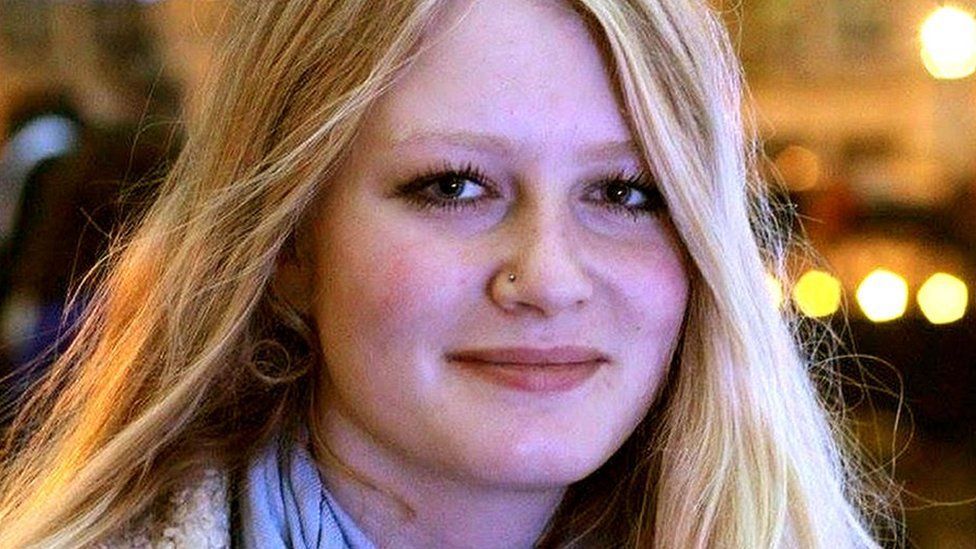Online safety
'Stranger danger' has long been considered one of the biggest threats to children and young people.
As our world becomes more digital, online predators pose just as much of a risk,
with terrifying potential consequences for those who are groomed online.

This page has been created in honour of
Gaia Pope-Sutherland
2 July, 1998 - 18 November, 2017
Find out more about Gaia, and her family's fight for justice here.
What is grooming?
Grooming is when someone builds a relationship, trust and emotional connection with an individual so they can manipulate, exploit and abuse them.
Grooming can take place over a short or long period of time – from weeks to years. Groomers may also build a relationship with the young person's family or friends to make them seem trustworthy or authoritative.
Children and young people can be groomed online, in person or both – by a stranger or someone they know. This could be a family member, a friend or someone who has targeted them – like a teacher, faith group leader or sports coach.
Anybody can be a groomer, no matter their age, gender or race.
Online grooming
When a child is groomed online, groomers may hide who they are by sending photos or videos of other people. Sometimes this'll be of someone younger than them to gain the trust of a "peer". They might target one child online or contact lots of children very quickly and wait for them to respond.
A groomer can use the same sites, games and apps as young people, spending time learning about a young person's interests and use this to build a relationship with them.
Children can be groomed online through:
- social media networks
- text messages and messaging apps, like Whatsapp
- text, voice and video chats in forums, games and apps.
Whether online or in person, groomers can use tactics like:
- pretending to be younger
- giving advice or showing understanding
- buying gifts
- giving attention
- taking them on trips, outings or holidays.
Groomers might also try and isolate children from their friends and family, making them feel dependent on them and giving the groomer power and control over them.
They might use blackmail to make a child feel guilt and shame or introduce the idea of 'secrets' to control, frighten and intimidate. Pressurising young people to send intimate photos and then threatening to share them with friends or family is just one example of this.
Signs to spot
Any child is at risk of being groomed.
It's important to remember that both boys and girls can be groomed.
Some children are more at risk of grooming, particularly those who are vulnerable. Children in care, with disabilities or who are neglected can be targeted by groomers.
Groomers will exploit any vulnerability to increase the likelihood a child or young person will become dependent on them and less likely to speak out.
It can be difficult to tell if a child is being groomed – the signs aren't always obvious and may be hidden. Older children might behave in a way that seems to be "normal" teenage behaviour, masking underlying problems.
Some of the signs you might see include:
- being very secretive about how they're spending their time, including when online
- having an older boyfriend or girlfriend
- having money or new things like clothes and mobile phones that they can't or won't explain
- underage drinking or drug taking
- spending more or less time online or on their devices
- being upset, withdrawn or distressed
- sexualised behaviour, language or an understanding of sex that's not appropriate for their age
- spending more time away from home or going missing for periods of time.
How to support a child who you suspect is being groomed:
A child is unlikely to know they've been groomed. They might be worried or confused and less likely to speak to an adult they trust. If you're worried about a child and want to talk to them, we have advice on having difficult conversations.
REPORT: to a Child Protection Advisor from the Child Exploitation and Online Protection Command (part of the National Crime Agency):
Call 999 if the child is at immediate risk or call 101 if you think a crime has been committed.
Call Crimestoppers anonymously on 0800 555 111 or online.
Contact your local child protection services. You can find their contact details on the website for the local authority the child lives in.
If you are being groomed/abused, you can call Childline where you can talk anonymously: 0800 1111
REMOVE:
Worried about how to support a young person who has had a sexual image or video of themselves shared online? If they’re under 18, they can use
Childline and the
Internet Watch Foundation's discreet Report Remove tool to see if it can be taken down.
Young people can get support from Childline throughout this process.
REASSURE: It's important to remember that children and young people may not understand they've been groomed. They may have complicated feelings, like loyalty, admiration, love, as well as fear, distress and confusion.
Victims of online grooming can feel significant shame, regret and embarrassment. It is crucial that you reassure them and make it clear that they are a victim of exploitation.